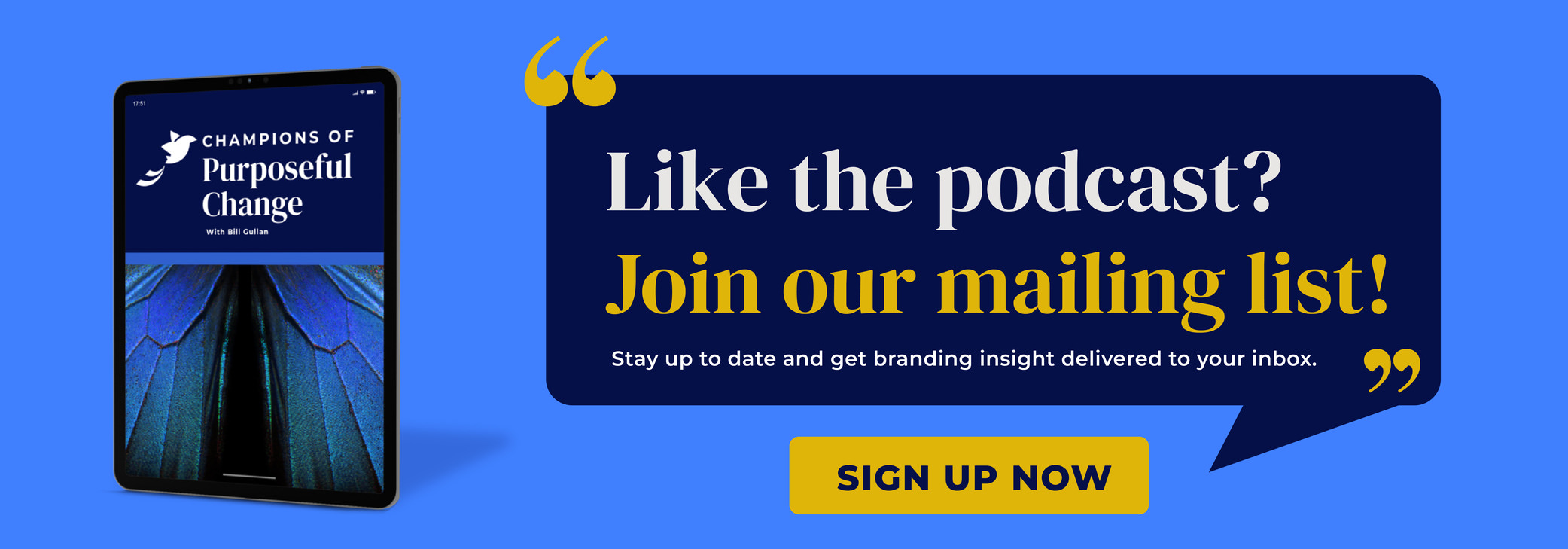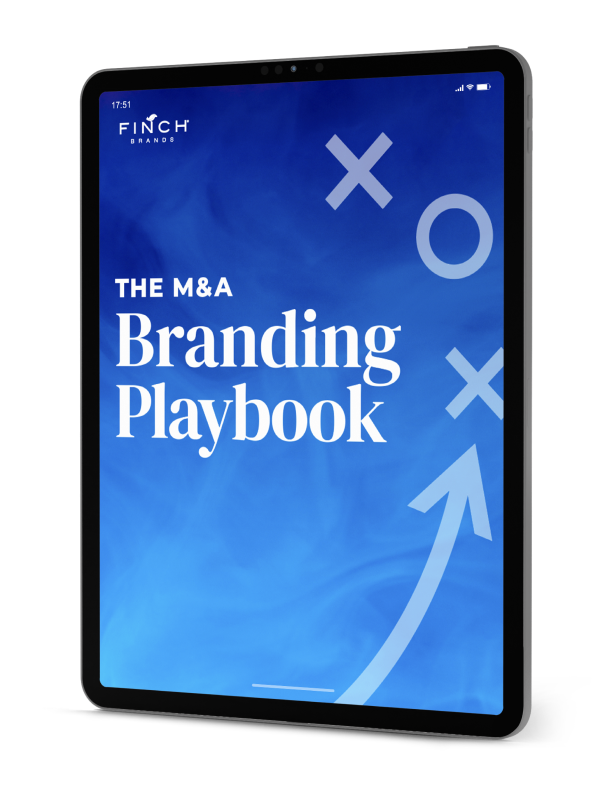One Big Idea: Super Bowl Smackdown

Following the final whistle, there is a clear winner and loser on the field. While Eagles fans everywhere rejoice, we take some time to look at the winners and losers off the field as it relates to the Super Bowl advertisers. In this episode, we provide a couple of comments on this year’s commercials — both trends and overall themes, as well as specific ads that worked or didn’t work. If you enjoy our podcast, pleas subscribe and leave us a rating!
Podcast: Download Subscribe: iTunes | RSS
Transcription:
Bill Gullan: Greetings one and all. This is Real-World Branding. I’m Bill Gullan, President of Finch Brands, a premiere boutique branding agency. This is One Big Idea, and here we are basking in the reflective glory of the Eagles Super Bowl triumph. Yes, the city is still standing, and our hearts are aflutter, and all of that.
This was an atypical year for those who are used to watching the Super Bowl, either for the ads, or for hoping that your cousin in New England or in Carolina, or wherever else, is happy at the end. We had a different way of engaging with this year’s game, I think, many of us who are certainly are Eagle fans. This time through, I actually didn’t really notice the ads, because I was largely in the fetal position and I was largely feeling such an intense emotional reaction to what was happening, that I had to go back, and almost didn’t even remember them when the game was over.
Fortunately, on Wednesday night there was a terrific, I thought, great panel of experts, who were talking about the ads that they liked, and that they didn’t. But even more than that, what they felt the strategy might have been behind each of them – who the target was, and how well it did or did not register. It was an event put on by the American Marketing Association of Philadelphia, and there were terrific panelists.
If you go online onto LinkedIn, or wherever else, I think you’ll probably be able to access, hopefully, a recording of this. I was honored and fortunate enough to be the moderator in whatever meager way that I could contribute, in least of terms of teeing up topics for the panel and the audience.
It was a thrill to do so, but in doing so, I was brought back to the ads themselves, and had to prepare for this by watching them through another two or three times and to really think about them with a marketer’s hat on, not just an Eagles hat, hoping and worrying about the next series once they got off the air.
So, with that, a couple of comments on this year’s commercials – both trends and overall themes, as well as specific ads that, in my own humble opinion, worked or didn’t work.
A couple of themes that were really interesting from a marketer’s perspective. One was, and we talk about this one on various podcast episodes here, about purpose and about the role of philanthropy. There was a really strong trend in the direction of highlighting and underlining a company’s philanthropic efforts.
It was not nearly as overtly political as last year was in the early days of the Trump administration, which was only a few months in when last year’s big game happened, but these were warmer and fuzzier, and more optimistic.
You had brands such as Verizon, such as Budweiser, such as Stella Artois. In some cases, big Super Bowl advertisers who were not speaking about new products, or about individual attributes, or just trying to make you laugh, or bringing in puppies, or other heart-warming scenes or celebrities just for the sake of the a-ha. They were talking about very specific philanthropic efforts.
The Budweiser one is memorable. I’ve heard some folks in the aftermath on social media questioning whether or not this is true, but this notion of Bud factories kind of switching from beer production into water production, to come up in a natural disaster situation, and provide the water that’s needed, was a really powerful image.
And speaking of corporate responsibility, and the overall desire of the marketplace to lean into values, and work with companies that are likable, was a really strong and powerful emotion that was very much expressed in this year’s ads, and Budweiser’s one example of that. Stella, Verizon, etc. There is one, however, ad that I think was following this strategy roughly, and ran into a little bit of trouble, and that was Ram Trucks.
Ram Trucks put forth a beautifully produced ad, that was full of various images of Ram doing tough and important work, with an overarching soundtrack of Doctor King giving an amazing sermon or speech about greatness, and about service. Then, at the end of the ad, what popped up on the screen, and those who were listening and just vibing the whole thing and experiencing it, I think were surprised. At least if the data on social media is correct, very much let down at the end of this amazing peroration, all of a sudden, the Ram logo and the tagline, “Built to serve” lands there.
I certainly saw a lot of heat on Ram as to whether or not they really deserved to claim the mantle or to deliver in that way. So we’ll see. It’s certainly gotten conversation started, which is an important element of what large form advertising is supposed to do, but they were taking some blows online, and at this panel on Wednesday night. They were a very overwhelmingly jeered. Not for the production of it, because it was beautiful, but for what they seem to be trying to connect their brand to, in ways that people thought they might not have earned the right to do that.
There were a couple of other trends that were notable, more for the brand strategy geek in me. I can’t remember too many times when major brands whose brand strategy tends to be more of a house of brands, like Procter & Gamble. Like Pepsi Co. Typically the strategy out of P&G would be to keep these brands separate, and not intermingle them. And yet, we’ll talk about it in a minute in other ways, but the Tide campaign that in many ways I think many people think was one of the winners of the night.
Not only was a winner of the night, but it brought in a whole arsenal or stable of P&G brands that many consumers don’t know are co-owned, and the strategy in fact is for them not to know. You have Old Spice, you have Mr. Clean, you have these other brands appearing in an on-going Tide campaign.
The benefits of that, in addition to potentially brand managers sharing budgets, is you are able, within a larger Tide narrative, to be able to just call back and call out brands like Old Spice, and then Mr. Clean in particular. Campaigns of the past that were effective for those, and these are brands that the marketplace knows and understands, and for them to appear even in a supporting role, is a nice way of not compromising your larger message in Tide’s case, to underlie it, but to also bring in other brands, and have them be noticed on that large Super Bowl stage.
So trends in philanthropy, trends in brand management. So P&G’s one example. Pepsi Co. did it in a very direct way with Doritos and with Mountain Dew, two brands as far flung as you can be within that stable, but with ads that were mirror images of one another, with hot and with cool, of course, with the requisite celebrity connotations and executions.
For Pepsi Co. and the brand management infrastructure there, to find a way to integrate new product offerings from each of those brands that heretofore have occupied, again, different ends of the same stable, is not only a marketing efficiency, but also I think we’ve seen at least in our panel discussion on Wednesday, as a big win for both.
They play off each other. There were certainly ways and areas to criticize each of those, whether they were portraying them as they ought to be bought together, or not. Were they obscured one by the other? There’s a lot of arguments, perhaps, to be had about the efficacy of that, but it was notable.
So those are a couple over-arching trends.
A couple of the spots that for me really landed effectively, beyond just the realm of triggering a laugh, or bringing a surprising celebrity back. I’ll tell you maybe three, that for me were particularly effective.
The first, let’s talk about Tide. The Tide ad, whatever on Wednesday night the only criticism, really, that seemed to register, was that you didn’t quite get ‘Tide ad.’ It’s an awkward phrase to voice. And so the diction of that maybe didn’t land the first time, but as an on-going structure throughout the game, and as a platform throughout the game, across very direct Tide advertisements, and into those that are a little bit surprising, this notion and association of Tide with clean clothes. Almost hijacking every ad.
Some people were reporting on social media that they couldn’t see another ad afterwards, because everyone of course is clean in these ads, mostly. And it was, it had an amazing impact that people were thinking about it, and laughing about it, and it had a good use of a very much of the moment celebrity.
It had the, again, the invocation of old favorites like Old Spice, and old favorite brands like Mr. Clean and there was a very interesting tie-in with halftime. Tide really was one of the winners of the night. Particularly when you hold it up against the only competitor in the detergent category which was Persil, that had an advertisement.
Persil is certainly a brand that doesn’t have as strong of a U.S. based reputation, and didn’t register, I think, in the way that Tide did. So that was probably one of my favorites.
Another one that was a favorite of mine was the Alexa losing her voice, for a couple reasons. Obviously, there was an incredible array of celebrity cameos in there that, in of themselves, were breathtaking. The ad itself was 90 seconds long, and you really touch all the parts of the consumer target when you have Gordon Ramsey, Cardi B, Rebel Wilson, and Sir Anthony Hopkins, and all of these folks doing their thing in one ad platform.
You also had Jeff Bezos, which I thought was interesting, and it was a, I guess, in some ways a very atypical role for him, as someone who’s not typically a front man for Amazon. He was portrayed in a way that was in some ways humanizing, because you saw him being concerned that Alexa lost her voice at the beginning, but also this executive hard-nosed profile of, “What are we going to do about it?” It was an interesting celebrity turn for Bezos.
The thing that for me enabled this brand to register in addition to just having it be inventive and long form, was that as opposed to other ads that are really just kind of about, “Hey, look at me and chuckle. And maybe associate me with something fun and happy.” What this ad did was, was anchor in, I think, in subtle ways, to core Alexa brand attributes.
They portrayed her as a ‘her,’ a helpful human, not just this disembodied voice out of a piece of technology. By showing how little things were functioning after she lost her voice, they really made the point of how much she does, and is capable to do.
For fans of Alexa who deploy her in a household, or a corporate environment, and have used her for a bunch of different things, this is a validation of her as an overall part of that alignment and what can happen, and what the peril is when for whatever reason she clicks off.
Now some at the panel discussion on Wednesday didn’t like, and I think they were quibbling around the edges, because we wanted to have a dialogue, but they didn’t like the fact that it indicated that maybe Alexa could go down. It also indicated that maybe Alexa was a little bit intrusive in one’s life, and she’s always sitting there listening.
I guess that’s true, and there are some concerns about security and privacy, and everything else, but I think the overall effectiveness, and the audience Wednesday night I think agreed, was a home run. Both to convey the impact of Alexa, her ubiquity, and to do it in a way that was humorous, and redounded to the positive of the parent company Amazon, that is such a factor in everyone’s life.
Let me see, some other ones. Another one that was really well-regarded, and I think was probably number three on my list of best of the night, was this NFL touchdown celebrations to come, that had a “Dirty Dancing” playback with Eli Manning and Odell Beckham Jr.
Of course ,as an Eagles fan, it’s always fun to say at least the Giants had something to do on Super Bowl Sunday this year. After week three, we knew they were done, so it certainly appeals to the mocker in me, of Giants fans. But this was a really funny send up of the Patrick Swayze, Jennifer Grey, “Dirty Dancing” dance scene, that is iconic for folks of a certain age. Ahem.
With Odell Beckham and Eli Manning hamming it up, and going through Bill Medley’s “Time of Your Life”, in a way that was really funny. Offensive linemen getting in the act, which we know is always funny. We saw that yesterday in Philadelphia with Jason Kelce. You always want offensive linemen to be seen, and maybe heard just a little bit. But a really effective ad. But for me what makes it effective is not just that there was a chuckle, and that you know, “Ha ha, look at these guys are dancing.”
The underlying reality, we’ve talked about it a lot on this podcast of where the NFL brand is, I think informs how they chose to execute creatively. And if it didn’t, it was a happy accident. The NFL is taking shots from the cultural right and the cultural left, in a way that is unprecedented in the history of this league, that has been hegemonic when it comes to Sundays and other days. A clear leader. Having your Ole Miss grad, deep south republican Manning family, connect in this way with your brash young African American superstar, in some ways is about bridging a divide that has opened up within the culture of the game.
Also emphasizing the fact that the NFL sees itself as fun. They’re allowing celebrations. This is about having fun with the game. And I think for many fans, whether they’re cord cutters or objectors, for whatever other reason. One of the reasons, be it CTE or concussions, be it the anthem protest, for or against, the NFL didn’t seem fun to as many people as it had anymore.
So not only portraying the league as fun, but also bringing together various sides, to the degree that you can in a Super Bowl ad spot, of the cultural divide, addresses some of the vulnerabilities that have opened up, in terms of the way the NFL is perceived.
Now, there are challenges, obviously, that the league faces, that are well beyond what something like this can solve, but this definitely seemed to have not only creative but strategic inspiration underlying it. I think for that reason, it fit and hit, and landed well, within the arsenal of other ads that were deployed.
One that I did not like, beyond the M&Ms Danny Devito one, which they weren’t really sure how to end that, I didn’t think. Actually two I think that I didn’t like as much. Not even so much for the ad creative, but just for the business strategy, that was underlying.
We spoke on this podcast a couple weeks ago about what was happening at Diet Coke. Diet Coke’s made a decision because of the decline in the diet soda marketplace, which is, I think, high single digits. And for Diet Pepsi it’s like 8%, for Diet Coke it’s like 4%. But either way, very very clear that where they’re losing is to the millennial audience.
Almost all of those loses can be seen as gains for La Croix, and other flavored seltzer or sparkling waters. I mean, there’s a really obvious category challenge. And as noted, Diet Coke is doing something about it, to their credit.
However, what they’re doing about it, is a new packaging play that looks a little bit more like Red Bull and a couple new flavors that are designed to appeal to millennials. Then an overall communications vibe, and aesthetic, that is classically millennial. Now, whether it is perceived as being authentic, or the work of some 45-year-old brand manager trying to speak millennial, I guess that remains to be seen.
I think the challenge with the ad, and its execution today, was again in the words of our ex-Creative Director here, our old friend Jordan Goldenberg. “Whoa, your strategy is showing.”
I mean, the execution of this. I think, I don’t know her name, but she’s YouTuber, I think, drinking the twisted mango flavor of Diet Coke, and dancing, and talking in a way that was so quintessentially millennial Twitter snark. Comes across, and again, I’m not the target, but it just didn’t land, or with anyone on Wednesday night. Land in a way that felt like, “Oh, I’m interested in trying this, this speaks to me. This is made for me.”
From my perspective, expressed a couple weeks ago, the issue with Diet Coke is not an issue of lack of flavor among millennials. Nor is it an issue with the brand not being youthful entirely, it’s an issue with the fact that the ingredient profile, and the health profile and all the nutritional trends are moving away from what diet soda is, from a sweetening perspective, and everything else on that label.
So the way to achieve some level of win back with millennials is not novelty flavors, or changes to can, it is something deeper and more significant, and substantial. At least that’s my two cents.
The other one that I thought the ad fine, was Michelob Ultra. But the concern about strategy is I’ve never really understood why that brand exists, and that sounds a little bit harsh, but I’m sure there was an insight when it was launched, about carbs. I’m sure there was an insight about an audience that would love to drink beer, and does love to drink beer, but avoids it, or avoids drinking more of it, for issues of waistline and health, and fitness.
That’s true, and I can’t debate the authenticity of that insight. I think the challenge, though, is that Michelob Ultra has always tried to straddle a line that is really hard to straddle. I mean, beers need to have credibility. You will need to be able to, in a bar, hold that logo and label, and bottle, and carry it around with pride.
Beers say something about the person who’s carrying them. And Michelob Ultra, I’m not sure what it says. It doesn’t have a great… Would you go up to the bartender, the cool bartender, and say, “I’d like a Michelob Ultra, please.” I don’t know if that’s the kind of bar call that really works.
Then you have the fact that I’m not sure that super fit people are really focused on drinking beer, or if they are, they’re fit enough that they can deal with an occasional beer and they’re going to want to have full flavor.
So this notion, it’s just like we’ve done so much studying about indulgent treats, and people don’t want watered down indulgent treats that aren’t bad for you. When they’re going to have an indulgent treat, they want to indulge in a treat.
So I understand the insight that led to the launch of Michelob Ultra, but again, they are repackaging the brand around this, they want it to be the choice of the super fit, yet fun-loving work hard, play hard, work out hard, audience. I just don’t think it lands and there may be data to the contrary, and I haven’t necessarily done my homework on this, but it’s been a brand that I’ve never understood.
Rather than blathering about the other 20 or 25 Super Bowl ads, let’s leave it here. As always, we’d love dialogue on this, so I’d love to hear your thoughts on Twitter @BillGullan or @FinchBrands. Certainly if we’ve deserved it, we’d appreciate you subscribing to this, or giving us a rating in the app store of your choice. But we’ll leave it there, and we’ll sign off from the Cradle of Liberty.







